Exercise Strength

Is strength training safe for beginners ?
Strength training is a form of exercise that can provide numerous benefits, including increased muscle mass and strength, improved bone density, better body composition, reduced risk of injury, and enhanced athletic performance. However, it is essential to take safety measures to prevent injuries from improper technique or overexertion. Before starting any new exercise program, consult with a healthcare professional to ensure that you are healthy enough to participate. Start slowly and gradually increase intensity, focus on proper technique, warm up and cool down properly, and listen to your body. By following these tips, beginners can safely start strength training and enjoy its many benefits while minimizing the risk of injury.

What are the best exercises for strength training ?
Strength training is essential for building muscle mass, increasing bone density, and improving overall physical performance. Here are some of the best exercises for strength training: 1. Barbell Squats 2. Deadlifts 3. Bench Press 4. Push-Ups 5. Pull-Ups 6. Lunges 7. Band Chest Press 8. Band Rows These exercises target multiple muscle groups throughout the body and can help you build strength, improve athletic performance, and enhance overall health and wellness.

Can exercise prevent osteoporosis ?
Exercise plays a crucial role in maintaining healthy bones by increasing bone density and strength. Effective exercises for preventing osteoporosis include weight-bearing exercises, strength training, balance exercises, high-impact exercises, and flexibility exercises. Incorporating these exercises into your routine can help reduce the risk of osteoporosis and maintain strong bones throughout your life.

What are the benefits of strength training ?
Strength training offers numerous benefits, including improved physical strength, boosted metabolism, enhanced bone density, better body mechanics and posture, mental health advantages, improved glucose control, reduced risk of chronic diseases, and increased independence. It is crucial for overall health and well-being.

What are some effective exercises for building strength and endurance in the water ?
Effective Water Exercises for Building Strength and Endurance Water exercises are a great way to build strength and endurance. They provide resistance that helps to tone muscles, improve cardiovascular health, and increase overall fitness levels. Here are some effective water exercises that you can try: 1. Swimming Laps 2. Water Aerobics 3. Resistance Training 4. High-Intensity Interval Training (HIIT) 5. Yoga in the Water Whether you prefer swimming laps, participating in water aerobics classes, resistance training, HIIT workouts, or yoga in the water, there's an option out there for everyone. So why not give it a try today?

Can strength training improve my posture ?
Strength training can significantly improve posture by addressing muscle balance, enhancing core strength, increasing body awareness, preventing future issues, and boosting confidence. This comprehensive approach not only corrects poor posture but also fosters overall health and well-being.

Can strength training help with weight loss ?
Strength training, involving the use of resistance to induce muscular contraction and build strength, can significantly contribute to weight loss by increasing metabolic rate, boosting post-exercise oxygen consumption (EPOC), improving body composition, and enhancing appetite control. Incorporating strength training into your routine, starting slowly and focusing on compound movements while staying consistent, can help achieve weight loss goals.

Is it better to do cardio or strength training for weight loss ?
When it comes to weight loss, both cardio and strength training have their benefits. Cardio exercises like running, cycling, and swimming can burn a significant number of calories in a short amount of time and improve cardiovascular health. Strength training helps build lean muscle mass, which raises your resting metabolic rate and burns more calories even at rest. While both types of exercise have their advantages, combining them into a well-rounded fitness routine is often the most effective approach for weight loss. A balanced routine that includes both cardio and strength training will improve various aspects of your fitness, including cardiovascular health, muscular strength, and flexibility.

What is the difference between strength training and bodybuilding ?
The text discusses the differences between strength training and bodybuilding, which are two popular forms of exercise. The main difference is that while both aim to improve physical fitness and appearance, strength training focuses on increasing muscular strength and endurance, whereas bodybuilding aims to build a well-defined, aesthetically pleasing physique. Techniques used in strength training include compound movements with heavy weights and low reps, while bodybuilding uses isolation exercises with moderate weights and high reps. The outcomes of strength training include increased strength and athletic performance, while bodybuilding leads to muscle growth and definition.

Does strength training have an impact on stress levels ?
Strength training can have a positive impact on stress levels through both physical and psychological benefits. It increases endorphin release, improves sleep quality, enhances self-esteem, provides distraction from stressors, fosters a sense of accomplishment, and promotes mindfulness. Consult with a healthcare professional before starting any new exercise regimen.
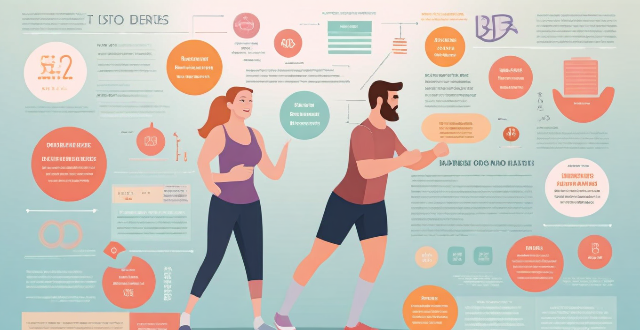
What are the benefits of strength training for overall health ?
Strength training offers numerous benefits for overall health, includingStrength training offers numerous benefits for overall health, includingurance, increased bone density Incorporating strength training into your fitness routine can help you achieve a healthier, stronger, and happier life.

What role does muscle strength training play in preventing chronic diseases ?
Muscle strength training can help prevent chronic diseases such as heart disease, stroke, type 2 diabetes, and some types of cancer. It also has many benefits for physical and mental health, including improved cardiovascular health, weight management, better bone health, reduced risk of type 2 diabetes, enhanced mental health, increased self-esteem, improved physical function, lowered blood pressure, and cancer prevention. To get started with muscle strength training, it is important to start low and slow, mix up your routine, rest enough, stay hydrated, eat right, and get enough sleep. With dedication and consistency, you can achieve great results!

Is it necessary to hire a personal trainer for strength training ?
The text discusses the pros and cons of hiring a personal trainer for strength training. Pros include customized workouts, accountability, proper form, variety, and goal setting. Cons are cost, scheduling conflicts, personal chemistry, self-motivation, and accessibility. The decision to hire a personal trainer depends on individual circumstances and preferences.
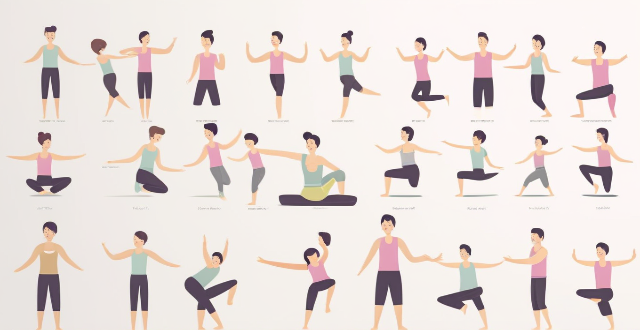
What are the best types of exercises for stress relief ?
The best types of exercises for stress relief include aerobic exercise, yoga, pilates, tai chi, and strength training. Aerobic exercise increases your heart rate and makes you sweat, which can help to reduce stress levels. Yoga helps to calm the mind and body, reducing stress and anxiety levels. Pilates focuses on strengthening the core muscles, improving posture and balance, and increasing flexibility. Tai Chi combines deep breathing with slow, flowing movements and has been shown to be effective in reducing stress levels. Finally, strength training involves using resistance bands or weights to build muscle strength and endurance.

What types of workouts are most effective for weight management ?
The most effective workouts for weight management include aerobic exercise, strength training, high-intensity interval training (HIIT), flexibility and stability training, and combination workouts. Aerobic exercises are great for burning calories and improving cardiovascular health, while strength training helps increase metabolism and prevent injury. HIIT is incredibly effective at burning calories in a short amount of time and boosting metabolism. Flexibility and stability training focus on improving range of motion, balance, and core strength. Combination workouts incorporate multiple types of exercise into one session, providing the benefits of each while keeping workouts interesting and challenging. The most effective workout for weight management is one that you enjoy and can stick to consistently over time, paired with a healthy diet for optimal results.

How does exercise affect bone remodeling ?
Exercise is crucial for maintaining bone health by stimulating bone remodeling, a continuous process of breaking down and rebuilding bones. This process is essential for maintaining bone density and strength, preventing osteoporosis, and other bone-related diseases. Regular exercise increases the activity of osteoblasts and reduces the activity of osteoclasts, leading to improved bone density and strength. Weight-bearing exercises, resistance training, balance exercises, and high-intensity interval training are effective ways to maintain bone health.
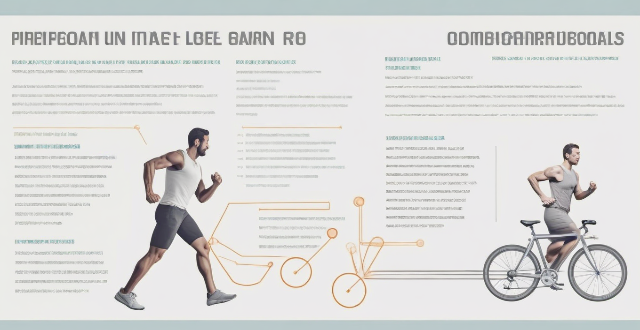
Are there any specific sports or exercises recommended for professionals working long hours ?
The article provides a list of recommended exercises for professionals working long hours, including cardiovascular exercises (walking/jogging, cycling, swimming), strength training exercises (bodyweight exercises, resistance band training, kettlebell training), and flexibility and balance exercises (yoga, Pilates, Tai Chi). The article also offers tips for incorporating exercise into a busy routine, such as setting realistic goals, making time for exercise, and mixing up workouts to prevent boredom and plateauing.

Can strength training be part of a female fitness program ?
**Can Strength Training Be Part of a Female Fitness Program?** Yes, strength training is crucial for women's fitness programs. It offers benefits such as improved muscle tone, increased metabolism, enhanced bone density, and reduced injury risk. To integrate strength training effectively: start with light weights, focus on compound movements, balance it with cardio workouts, and consider professional guidance for personalized plans. This approach ensures a comprehensive and beneficial fitness regimen for women.

What are the best workout routines for women ?
The article provides a list of the best workout routines for women, including cardiovascular exercises like running, cycling, and swimming; strength training exercises like weight lifting, resistance bands, and bodyweight exercises; yoga and Pilates; high-intensity interval training (HIIT) like Tabata, circuit training, and jump rope; group fitness classes like Zumba, kickboxing, and barre; outdoor workouts like hiking, rock climbing, and stair climbing; and low-impact workouts like walking, elliptical machine, and rowing machine. These workouts can help women improve their overall fitness, strength, flexibility, balance, and cardiovascular health.

How often should women exercise to see results ?
Exercising regularly is crucial for women's health, and the recommended frequency varies based on the type of exercise. Cardiovascular exercises are recommended at least 150 minutes per week, while strength training should be done at least twice a week. Flexibility and balance exercises should be included in the routine at least once a week. Various factors such as age, goals, fitness level, lifestyle, and health conditions can impact the effectiveness of the workout routine. It is essential to listen to your body and adjust your exercise routine accordingly to achieve optimal results and maintain a healthy lifestyle.

Can strength training help improve my running performance ?
Strength training is an essential component of any fitness program, including running. It helps to build muscle strength and endurance, which can significantly improve your running performance. Strength training can help increase muscle strength and endurance, improve running economy, reduce the risk of injury, and enhance posture and body alignment. To incorporate strength training into your running routine, start slowly with light weights and gradually increase intensity over time. Choose exercises that target major muscle groups used during running, such as glutes, hamstrings, quadriceps, calves, and core muscles. Incorporate plyometric exercises to improve explosive power and acceleration. Allow sufficient recovery time between sessions to avoid overtraining and potential injuries.

How much exercise is needed to see emotional benefits ?
Engaging in regular physical activity is not only beneficial for your physical health but also for your emotional well-being. The question of how much exercise is needed to see emotional benefits is a common one, and the answer may vary depending on individual factors such as age, fitness level, and personal goals. However, there are some general guidelines that can help you determine the amount of exercise needed to experience emotional benefits. There are various types of exercise that you can incorporate into your routine, including aerobic exercise, strength training, flexibility exercises, and balance exercises. Regular exercise has been shown to have numerous emotional benefits, including reduced stress and anxiety, improved mood, better sleep, and increased self-esteem. According to the American Heart Association, the following guidelines are recommended for adults to achieve significant health benefits: - At least 150 minutes per week of moderate-intensity aerobic activity or 75 minutes per week of vigorous-intensity aerobic activity. - At least two days per week of strength training exercises involving all major muscle groups. - At least two to three days per week of flexibility exercises to maintain range of motion and prevent injury. - As needed, particularly for older adults or those with balance issues. It's important to note that individual needs may vary, and it's essential to listen to your body and adjust your exercise routine accordingly to ensure you're getting the most out of your workouts.

What kind of exercises do A-list actors and actresses prefer for staying in shape ?
A-list actors and actresses prioritize a variety of exercises to maintain their physical fitness. These include cardiovascular workouts such as running, cycling, and HIIT; strength training exercises like weightlifting, resistance bands, and bodyweight exercises; yoga and Pilates for flexibility, balance, and core strength; and dance workouts for a fun way to get the heart rate up. By incorporating these exercises into their routines, they can stay in shape both physically and mentally.

How often should I exercise to see weight loss results ?
To see weight loss results, start with low-intensity workouts and gradually increase intensity over time. Aim for at least 150 minutes of moderate-intensity exercise per week, mix up your workouts, and incorporate strength training. Consistency is key!

Can people with osteoporosis still do exercise safely ?
Osteoporosis is a condition characterized by low bone mass and deterioration of bone tissue, leading to brittle bones that are prone to fractures. It is a common concern among older adults, especially women. While exercise is generally recommended for maintaining overall health, it is important to consider the safety of physical activity for individuals with osteoporosis. In this article, we will explore whether people with osteoporosis can still do exercise safely and what precautions should be taken. Is Exercise Safe for People with Osteoporosis? Benefits of Exercise for Osteoporosis: - Improved Bone Density: Regular weight-bearing exercises can help improve bone density in individuals with osteoporosis. - Increased Strength and Balance: Resistance training and balance exercises can enhance muscle strength and reduce the risk of falls. - Better Quality of Life: Engaging in physical activities can improve mood, reduce pain, and enhance overall well-being. Risks Associated with Exercise for Osteoporosis: - Fracture Risk: High-impact activities or excessive force during exercise may increase the risk of fractures in people with osteoporosis. - Joint Stress: Some exercises may put excessive stress on joints, potentially leading to joint pain or damage. Safe Exercises for People with Osteoporosis: Weight-Bearing Exercises: - Walking: A low-impact activity that can help maintain bone density. - Dancing: A fun way to engage in weight-bearing exercise while also improving balance. Resistance Training: - Light Weight Lifting: Using light weights or resistance bands can strengthen muscles without putting too much strain on bones. - Bodyweight Exercises: Squats, lunges, and step-ups can be modified to suit individual abilities and provide resistance training benefits. Flexibility and Balance Exercises: - Tai Chi: A gentle form of exercise that focuses on slow, flowing movements to improve balance and flexibility. - Yoga: Certain yoga poses can help enhance flexibility, balance, and strength, but it is essential to avoid high-impact or bending poses that may increase fracture risk. Precautions to Take During Exercise: 1. Consult with a Healthcare Professional: Before starting any exercise program, it is crucial to consult with a healthcare professional who can assess your individual needs and risks. 2. Start Slowly: Begin with low-intensity exercises and gradually increase the duration and intensity as your body adapts. 3. Use Proper Technique: Ensure proper alignment and technique during exercises to minimize the risk of injury. 4. Wear Appropriate Footwear: Choose shoes with good support and cushioning to reduce the impact on joints and bones. 5. Avoid High-Impact Activities: Steer clear of activities like jumping or running that may increase the risk of fractures. 6. Listen to Your Body: If you experience pain or discomfort during exercise, stop immediately and seek advice from a healthcare professional. 7. Incorporate Rest Days: Allow your body time to recover between exercise sessions by including rest days in your routine.
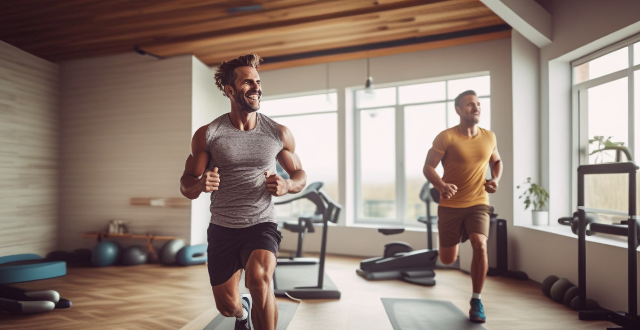
Are there specific workout routines designed for emotional stability ?
Emotional stability is an important aspect of overall well-being, and exercise can play a significant role in achieving it. Cardiovascular exercises like running, cycling, swimming, and dancing increase heart rate and blood flow, reducing stress and anxiety levels while releasing endorphins that improve mood. Strength training such as weightlifting or resistance band exercises build muscle strength and endurance, improving self-esteem and confidence while reducing symptoms of anxiety and depression by promoting the growth of new brain cells and increasing neurotransmitter levels. Yoga and meditation practices focus on mindfulness, breathing techniques, and relaxation, reducing stress levels and improving cognitive function, memory, and attention span. Incorporating these activities into your fitness routine can have a positive impact on your emotional stability and overall well-being.
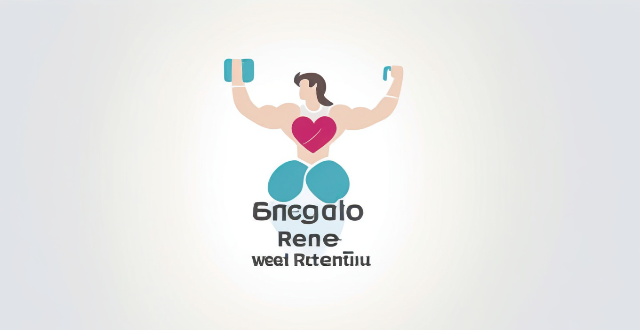
Can aerobic exercise help me lose weight ?
Aerobic exercise, or cardio, is an effective way to lose weight. It increases heart rate and breathing, leading to higher calorie burn during and after the workout. Moderate-intensity aerobic activities also use fat as fuel, improving metabolic rate for further calorie expenditure at rest. Regular cardio can strengthen heart muscles for efficient blood pumping and contribute to muscle endurance. Types of aerobic exercises include running, cycling, swimming, walking, and group fitness classes like Zumba. To successfully incorporate aerobic exercise into a weight loss plan, it's recommended to start slowly, mix up activities, stay consistent, and combine with strength training. Potential challenges such as overexertion and plateaus in progress should be managed by adjusting routines. Overall, aerobic exercise can aid in weight loss when part of a balanced fitness regimen.

How do I boost my cell phone signal strength ?
Having a strong cell phone signal is crucial for making calls, sending messages, and using mobile data. If you're experiencing poor signal strength, there are several ways to improve it. Here are some tips on how to boost your cell phone signal strength: 1. Check for Obstructions: Objects like buildings, walls, and trees can block or weaken signals. Try moving to an area with fewer obstructions. 2. Use 2G Instead of 3G/4G: If you're having trouble with 3G or 4G, switch to 2G. While slower, 2G networks are more widespread and often provide better coverage in remote areas. 3. Keep Your Phone's Software Up to Date: Manufacturers often release updates that can improve signal strength. 4. Use a Signal Booster: These devices work by capturing an outside signal, amplifying it, and rebroadcasting it inside your home or office. They can significantly improve signal strength in areas with weak coverage. 5. Contact Your Service Provider: If none of the above solutions work, contact your service provider and report the issue. They may be able to identify a problem with their network or offer additional solutions.

Does consistent exercise regulate sleep patterns ?
Consistent exercise has been shown to have a positive impact on sleep patterns, helping regulate the body's internal clock and increase the production of sleep-promoting hormones. Regular physical activity can lead to better sleep quality, reduced stress and anxiety, and improved overall health. To reap these benefits, it's important to incorporate regular exercise into your routine, starting slowly and gradually increasing intensity and duration over time.

What are the favorite exercises of popular celebrities ?
Celebrities have different preferences when it comes to exercise, but they all share a common goal of staying fit and healthy. Some popular exercises among them include yoga, Pilates, cardiovascular exercises, and weight training. Yoga is favored by Jennifer Aniston, Gwyneth Paltrow, and Madonna for its benefits on flexibility, strength, and balance. Pilates is preferred by Kim Kardashian, Vanessa Hudgens, and Kate Hudson for strengthening the core muscles and improving posture. Cardiovascular exercises like running, cycling, and swimming are enjoyed by Taylor Swift, Emma Stone, and Ryan Reynolds for burning calories and improving cardiovascular health. Weight training is popular among Dwayne "The Rock" Johnson, Chris Hemsworth, and Gal Gadot for building muscle mass and increasing strength. Overall, celebrities incorporate these activities into their daily routines to maintain their impeccable physique and overall well-being.